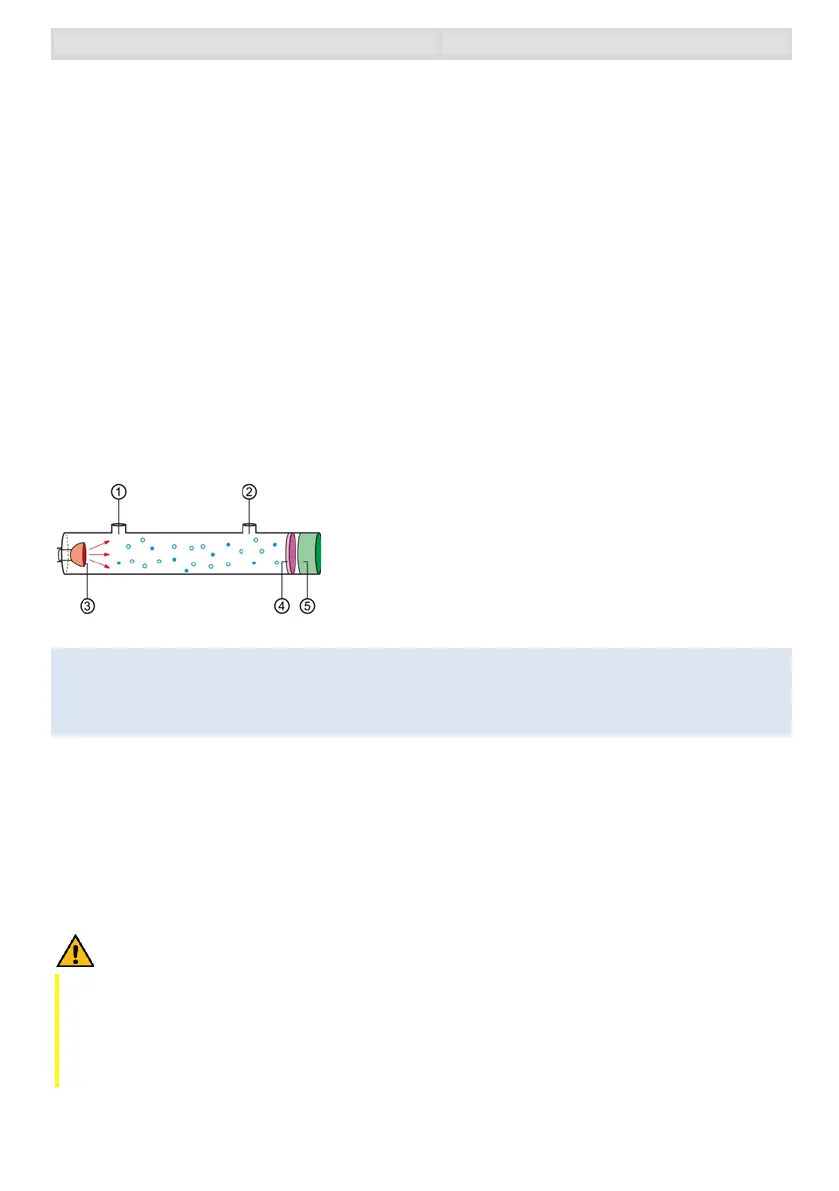Senseca ECO 420 handleiding
Handleiding
Je bekijkt pagina 13 van 26

ECO 420 series - Compact CO2 monitor with alarm
Measurement Basics
B-H90.0.0X.DK2-4.1 Page 13 of 26
5 Measurement Basics
5.1 NDIR CO
2
sensor
5.1.1 Explanation
The sensors are based on non-dispersive infrared sensor technology, NDIR.
This is the most widely used sensor technology for CO
2
measurement.
The principle of the NDIR sensor is that an IR light source is focusses so that an optical beam
is created, which passes through the existing gas, including CO
2
. After an optical band pass
filter is passed, an IR sensor measures the level of IR light, wherein the CO
2
values in the
optical path are displayed.
5.1.2 Design
1 Gas inlet
2 Gas outlet
3 IR lamp
4 Optical filter
5 Thermopile detector
A sensor module with single-channel detectors is used for the device.
Note
A micro light bulb is used as an IR radiation source. It emits a broadband spectrum. The
sensor is long-lasting and maintenance-free.
5.1.3 Measurement stability
In order to be able to maintain the specified accuracy for many years to come, regular
adjustment must be carried out depending on the required accuracy.
If the device is handled with care, an interval of 1 year is sufficient - however, rough
operating conditions can also shorten this period.
Caution!
The CO
2
sensor is sensitive to impact! Strong shocks (e.g. from falling down) can lead to a
permanent detuning of the detector and thus to incorrect measured values (measured
value too low!!).
If this is the case, a "basic sensor calibration" must be carried out (see chapter 6.2.3).
Bekijk gratis de handleiding van Senseca ECO 420, stel vragen en lees de antwoorden op veelvoorkomende problemen, of gebruik onze assistent om sneller informatie in de handleiding te vinden of uitleg te krijgen over specifieke functies.
Productinformatie
| Merk | Senseca |
| Model | ECO 420 |
| Categorie | Niet gecategoriseerd |
| Taal | Nederlands |
| Grootte | 2979 MB |







